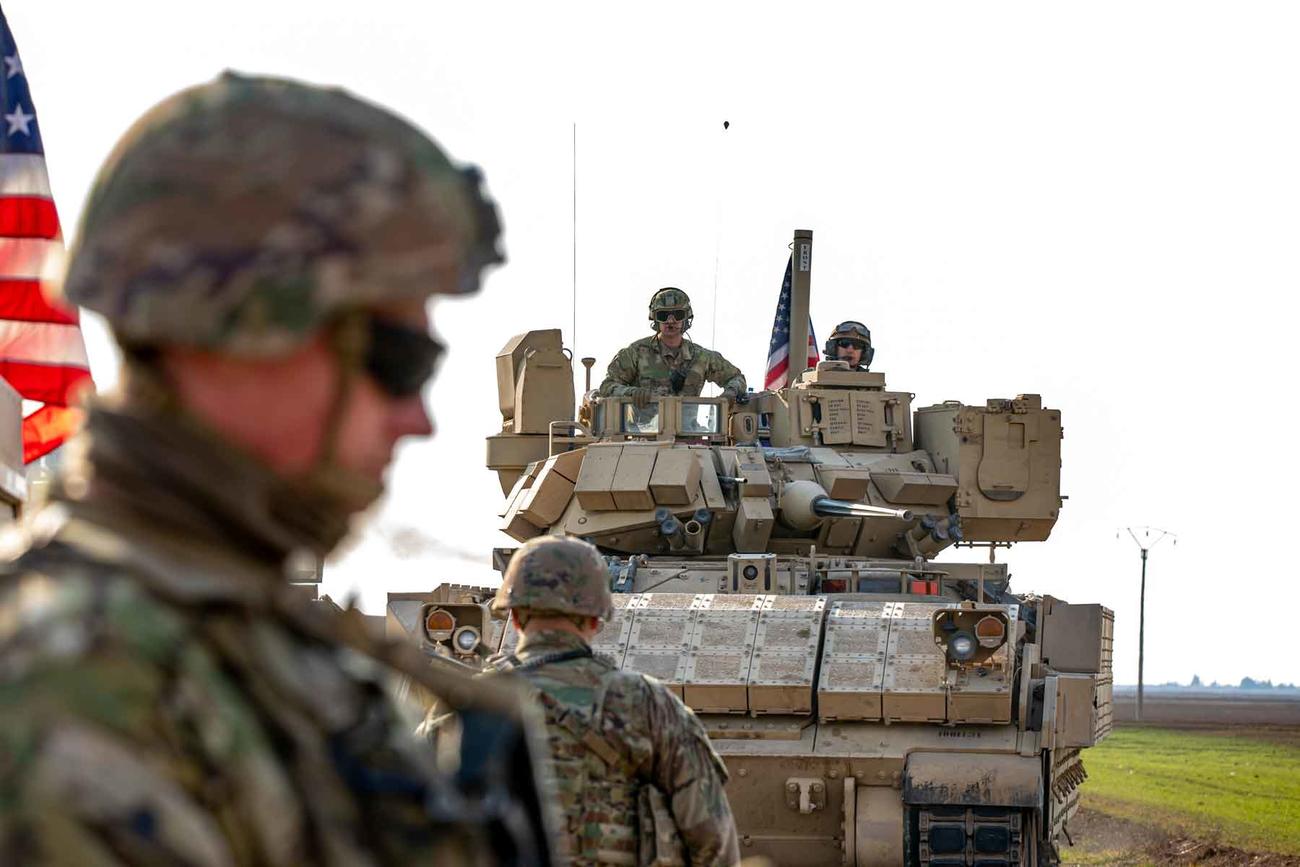
A day after a second U.S. airstrike against more targets in Syria to deter Iran proxy groups, the Pentagon revealed Thursday that bases with American troops suffered a fresh round of attacks, a handful of injuries and the loss of a drone.
Two U.S. F-15s made what the Pentagon described as a precision self-defense strike on a weapons storage facility in eastern Syria to send a message to groups aligned with Iran’s Islamic Revolutionary Guard Corps-Quds Force that have been attacking troops for weeks with drones and rockets.
A senior defense official, who spoke to reporters late Wednesday night, said that they are combining the most recent strike with “very clear messaging through multiple channels and the message is to Iranian senior leaders: We want you to direct your proxies in militia groups to stop attacking us.”
But it seemed unclear whether the Iran-aligned groups in Syria and Iraq had been deterred. Pentagon spokeswoman Sabrina Singh said Thursday there had been four additional attacks on U.S. forces in the 24 hours since the latest airstrikes, which were the second U.S. airstrikes in Syria within the past two weeks.
Three service members suffered injuries in the newest attacks: Two received traumatic brain injuries and one was a “non-serious, non-critical injury,” Singh said. All had since returned to duty.
There have been a total of 46 rocket and drone attacks — up from 38 Monday — on U.S. bases in Iraq and Syria since Oct. 17, she said.
At this point, the total number of troop injuries stands at 56 since the attacks began in mid-October, and Singh noted that “most of them occurred before the Oct. 26 self-defense strike.” That attack targeted two facilities — a weapons storage facility and ammunition storage facility — in eastern Syria used by Iran and its proxies, the Pentagon said.
A senior military official who also spoke with reporters Wednesday noted that the U.S. strikes were precise and calculated — unlike the attacks American outposts have endured over the past several weeks.
“At no point have the Iranian-aligned militia groups taken a shot at U.S. forces where they had any idea of the numbers of casualties that they may or may not inflict and in all cases were taking shots at what they believe to be very large numbers of U.S. personnel with the intent of killing them,” the military official said.
By contrast, the military official said U.S. forces watched the location for the most recent strike — described as a weapons warehouse — “for a bit” in an effort to strike “at a time that we would be able to eliminate the use of the facility to the [Islamic Revolutionary Guard Corps] and do so with a minimal number of casualties.”
The military official also noted that the pair of F-15 fighter jets used precision munitions, and “we are very certain that this did not involve civilian loss.”
Singh also confirmed that Houthi rebels in Yemen, the same group that the Pentagon says launched a series of missiles that were intercepted by a U.S. destroyer a month ago, successfully shot down a U.S. MQ-9 Reaper drone over the Red Sea.
“This is not the first time that the Houthis have shot down one of our MQ-9 drones,” Singh said.
There was an attempt by the Houthis to try and recover the drone. “It is unlikely that they will be able to retrieve anything of significance, and we are not, right now, looking to recover anything either,” she said.
Since Hamas, the group that rules Gaza, attacked Israel on Oct. 7 in a brutal, surprise terrorist attack that left about 1,400 Israelis dead, the U.S. military has moved large amounts of ships, planes and personnel into the Middle East to not only offer support to Israel but act as a deterrent to Iran and its proxies in the area.
Officials have also resisted connecting the rocket and drone attacks on U.S. forces in Iraq and Syria to that conflict. However, over the last few weeks, the Pentagon has put more than 2,000 troops on deployment alert and moved several air defense units and hundreds of other troops into the region in an effort to help increase deterrence and defensive capabilities.
When asked whether more deployments are planned, the senior defense official simply said that they didn’t “have anything to announce.”
— Konstantin Toropin can be reached at konstantin.toropin@military.com. Follow him on X at @ktoropin.









